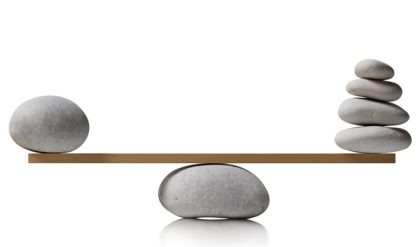The aim of indifference curve analysis is to analyse how a consumer chooses between two goods to get maximum satisfaction. Or how a consumer makes choice from his limited resources to get maximum satisfaction.(The Aim of a consumer = to get maximum satisfaction)
Indifference analysis combines two concepts;
- indifference curves
- and budget lines (constraints)
The indifference curve
· An indifference curve is a locus of combination of points that shows all the possible combinations of two goods which give him the same level of satisfaction. All the combinations between which a person is indifferent( that’s why its called indifference curves).
· Also, we can say that when the problem of choice arises, the consumer ranks all such combinations of the same 2 goods at the same level.
An Indifference Schedule
| Combinations | Units of A | Units of B | All these combinations yield equal satisfaction to the consumer. |
| A | 12 | 2 | |
| B | 6 | 4 | |
| C | 4 | 6 | |
| D | 3 | 8 |
· Drawing the above table on a graph would give the following curve, Which we call indifference curve.
· Kindly remember when we talk about indifference curve, we are concerned with utility(satisfaction) only, not price.
· In Indifference curve IC1, all the points A,B, C and D provides the consumer same level of satisfaction. So, he can choose either of 4 .He is indifferent to any point on the curve IC1. All points provide him the same level of satisfaction
· **An important point to remember is that the use of an indifference curve does not try to put a physical measure onto how much utility a person receives.
The shape of the indifference curve and the marginal rate of substitution
· The shape of the indifference curve and the marginal rate of substitution
Indifference curve is convex to the origin.
The marginal rate of substitution is the amount of one good (i.e. Good A) that has to be given up if the consumer is to obtain one extra unit of the other good (Good B).
· The marginal rate of substitution (MRS) = change in good X / change in good Y
· Using Figure 1, the marginal rate of substitution between point A and Point B is;
· MRS = -6 / 2 = -3 = 3 (Note, the convention is to ignore the sign).
| Combinations | Units of A | Units of B | Units of A given up to get few more units of B | MRTS=A/B |
| A | 12 | 2 | – | |
| B | 6 | 4 | 6 units of A to get 2 units of B | =-6/2= -3 |
| C | 4 | 6 | 2 units of A to get 2 units of B | =-2/2= -1 |
| D | 3 | 8 | 1 units of A to get 2 units of B | =-1/2 =-0.5 |
· · The shape of the indifference curve is not a straight line. The indifference curve is convex to the origin.This is due to the concept of the diminishing marginal rate of substitution between the two goods.
· · The marginal rate of substitution is the amount of one good (i.e. Good A) that has to be given up if the consumer is to obtain one extra unit of the other good (Good B).
· · The slope of the curve represents the marginal rate of substitution, (MRS)
· The reason why the marginal rate of substitution diminishes is due to the principle of diminishing marginal utility. Where this principle states that the more units of a good are consumed, then additional units will provide less additional satisfaction than the previous units. Therefore, as a person consumes more of one good (i.e. work) then they will receive diminishing utility for that extra unit (satisfaction), hence, they will be willing to give up less of their leisure to obtain one more unit of work.
· The relationship between marginal utility and the marginal rate of substitution is often summarised with the following equation;
· MRS = Mux / Muy






Comments are closed.